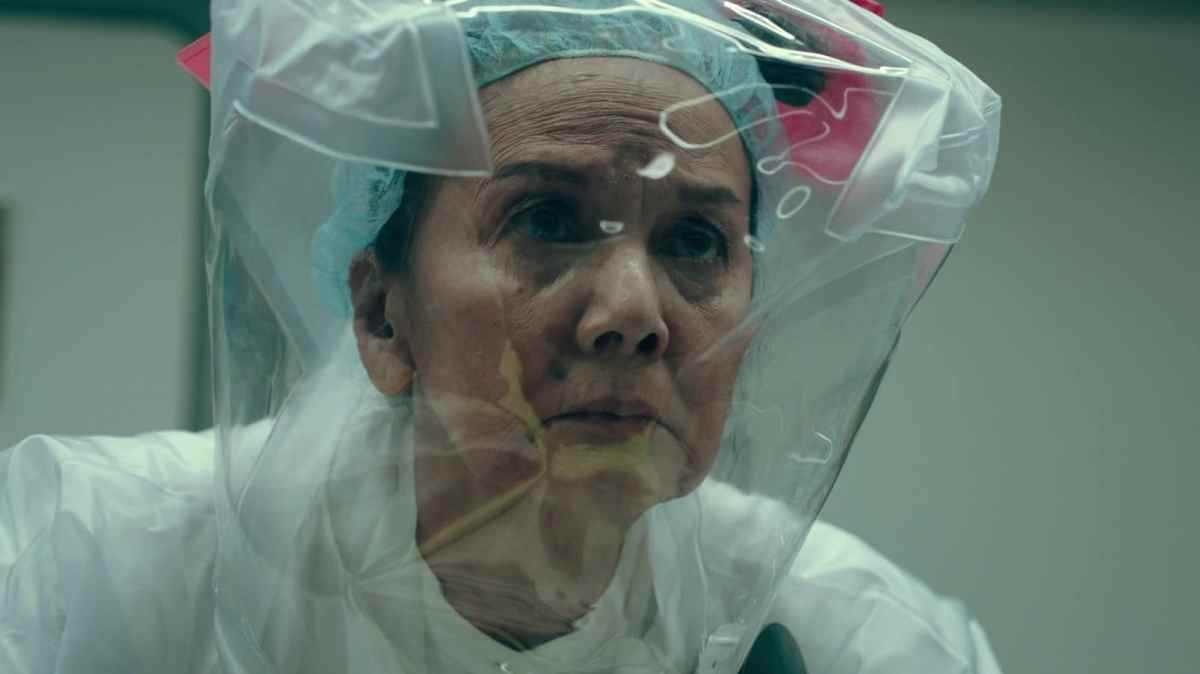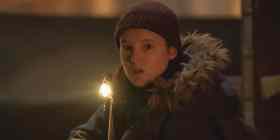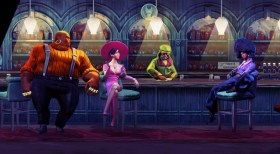Episode 2 of The Last of Us HBO was a strong follower to its premiere episode, giving viewers the first in-depth look at the infamously terrifying Clickers, an explanation on the Cordyceps network, as well as some important backstory into the origin of the virus.
In this recap of HBO’s The Last of Us Podcast Episode 2, we’ll dive into some of the behind the scenes insights provided by Showrunners Craig Mazin (Chernobyl), Neil Druckmann (Creative Director on The Last of Us Part I & II), and host Troy Baker (Joel’s original voice and motion capture actor on The Last of Us Part I & II), as well as compare and contrast the HBO adaptation to the base games.
For further analysis and reading on the HBO adaptation of The Last of Us, you can check out the following articles:
- A spoiler-free review of the entire first season of The Last of Us HBO TV series
- The Last of Us HBO TV series: Cast and Character Guide
- The Last of Us interview: Henry and Perry actors examine their work
- The Last of Us interview – Storm Reid on portraying Riley
Episode recaps and analysis:
- The Last of Us – Episode 1 Recap – ‘When You’re Lost in the Darkness’
- The Last of Us – Episode 2 Recap – ‘Infected’
- The Last of Us – Episode 3 Recap – ‘Long, Long Time’
- The Last of Us – Episode 4 Recap – ‘Please Hold to My Hand’
- The Last of Us – Episode 5 Recap – ‘Endure and Survive’
- The Last of Us – Episode 6 Recap – ‘Kin’
- The Last of Us – Episode 7 Recap – ‘Left Behind’
- The Last of Us – Episode 8 Recap – ‘When We Are in Need’
- The Last of Us – Episode 9 Finale Recap – ‘Look for the Light’
Behind-the-scenes podcast recaps:
- The Last of Us Podcast – Behind the Scenes of Episode 1 – ‘When You’re Lost in the Darkness’
- The Last of Us Podcast – Behind the Scenes of Episode 2 – ‘Infected’
- The Last of Us Podcast – Behind the Scenes of Episode 3 – ‘Long, Long Time’
- The Last of Us Podcast – Behind the Scenes of Episode 4 – ‘Please Hold to My Hand’
- The Last of Us Podcast – Behind the Scenes of Episode 5 – ‘Endure and Survive’
- The Last of Us Podcast – Behind the Scenes of Episode 6 – ‘Kin’
- The Last of Us Podcast – Behind the Scenes of Episode 7 – ‘Left Behind’
- The Last of Us Podcast – Behind the Scenes on Episode 8 – ‘When We Are In Need’
The Last of Us is now streaming on HBO Max in the US, and Binge in Australia.
HBO’s The Last of Us Podcast – Episode 2 Recap – ‘Infected’
- Druckmann’s time behind the camera
- The casting of Joel and Ellie
- The Jakarta scene
- Changes in Tess’ backstory
- The behaviour of the Cordyceps virus
- The changes at The Capitol Building
Druckmann’s time behind the camera
Episode 2 of The Last of Us HBO was directed by series Showrunner and Creative Director on The Last of Us video games Neil Druckmann. This is the first episode he has directed for the series following Craig Mazin’s direction on the premiere episode.
Druckmann described the experience as ‘one of the highlights’ of his life, noting the comradery and collaboration he felt within the cast and crew, and spoke to the difference of directing on a practical television set compared to the motion capture stage both of the games were recorded in.
He immediately noted that there was a lot more freedom to change elements like camera placement, costume, set, and character when filming on a motion capture stage, and that all of this can be done after recording a scene. When working on the adaptation, a lot more had to be planned ahead of time, and he emphasised that ‘the final shot is what you’re working with’.
Mazin also stated: ‘The only piece of practical directing advice I gave him was to wait a little bit longer before saying cut’.
The casting of Joel and Ellie
Mazin and Druckmann spoke to the casting of both Pedro Pascal and Bella Ramsay, with Mazin saying:
‘You write a movie four times – when you write it, when you cast it, when you shoot it, and when you edit it’, adding that casting is as crucial to the process as any other element in pre-production.
The team noted Pedro Pascal brought a certain vulnerability to the character of Joel, which was an important factor in undercutting his heroism, and that he added things to the adaptation that weren’t explored as much in the video games – drawing on the example of Joel flinching after Tess first reveals her bite mark during their encounter with the infected at The Capitol Building.
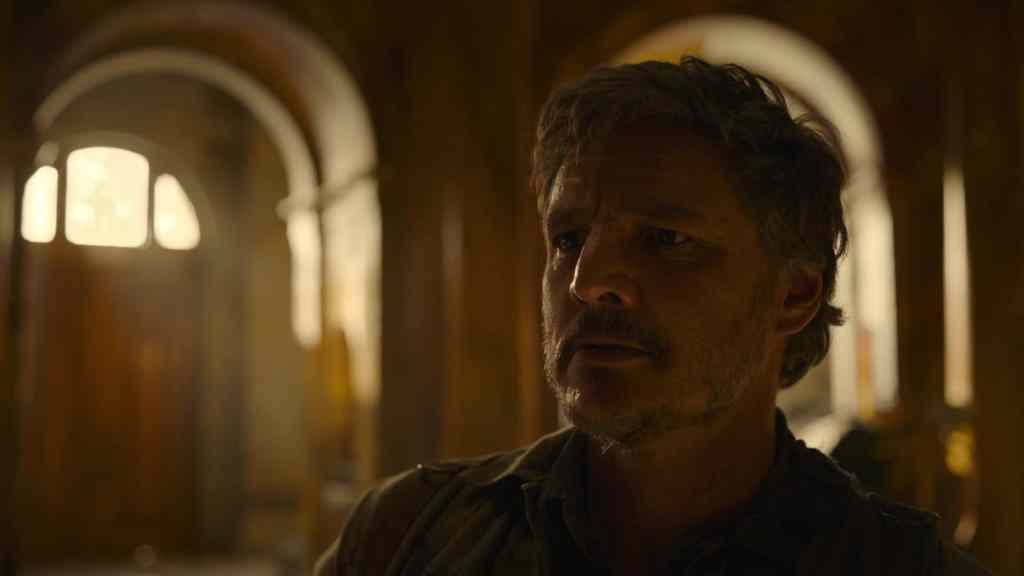
Druckmann also commented on the idea of ‘trusting actors to sometimes deviate from what’s on the page’ and spoke to the reactions he’d noticed online that asked why the actors had been instructed not to play the games during filming, saying:
‘It’s for this moment [Troy Baker is] describing right now… that flinch doesn’t exist in the game. If he was just trying to copy [Baker’s] performance, the best he could do is a poor imitation of [Baker’s] performance. Instead we wanted Pedro, and Bella, and everyone who was part of the cast to make it their own’.
The Jakarta scene
Episode 2 opens with a scene taking place in Jakarta, Indonesia in which a mycologist has been called in to speak with a Military Officer for advice on how to quell the impending effects of the fungal outbreak. The mycologist responds quite matter-of-factly with a word that translates in English to ‘bombs’, indicating the severity of the situation and what little humanity can do to slow down this disaster.
Mazin took inspiration from creator and producer Vince Gilligan (known for his work on Breaking Bad, Better Call Saul, and The X-Files), noting he had watched Gilligan ‘disorient’ the viewer in the past and was ‘particularly fond’ of delving into that idea with the cold open of this episode.
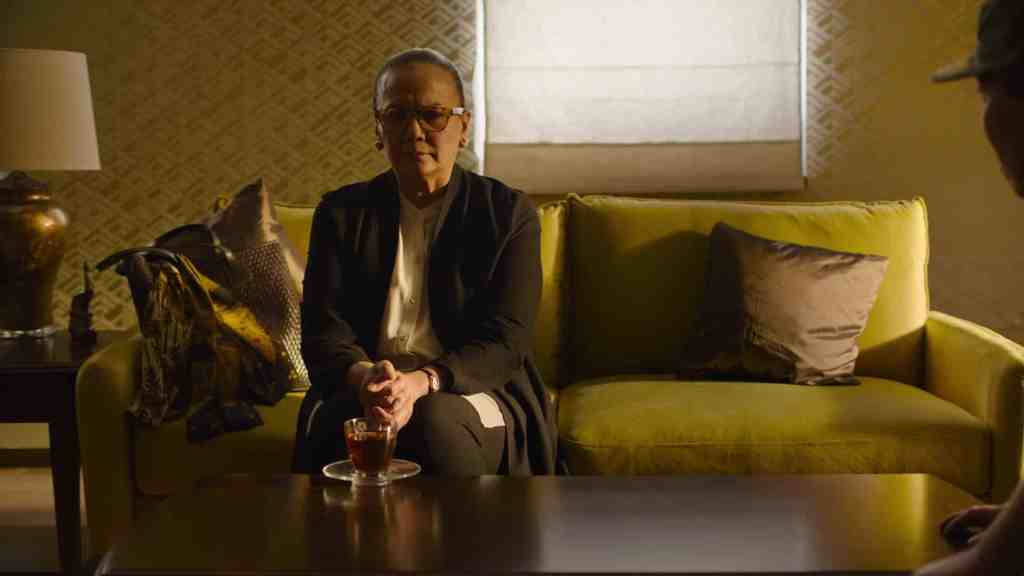
This scene also gave the team an opportunity to expand on scenarios that would have taken place outside of the United States which alluded to the origin of the virus, as the games never explicitly show a perspective outside of America.
Mazin added: ‘We knew we wanted to give a little bit more of an origin story. We wanted to see what it would really be like at the very, very beginning’.
‘We wanted to show also that it was global, that this wasn’t just something that was happening in America. This was the world’.
Changes in Tess’ backstory
The adaptation also gave the team leeway to expand on characters that those who had played the game were already familiar with, creating space for richer backstories and relationship dynamics.
Mazin mentioned a very interesting tidbit regarding Tess’s backstory, saying he and Druckmann had written, but never shot, exposition which revealed that before Tess became acquainted with Joel, she had a husband and a child who both became infected.
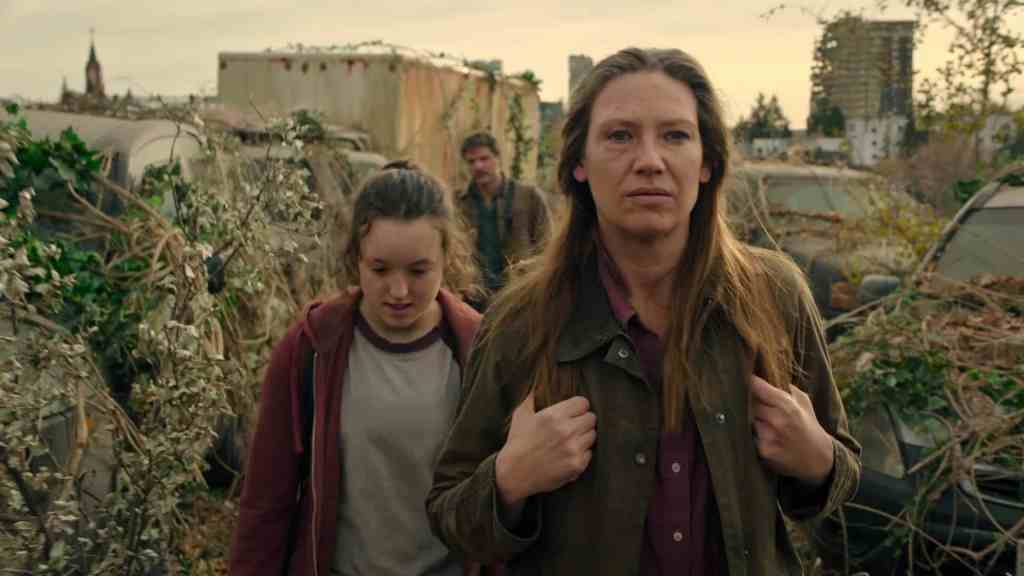
It was said that Tess had to shoot her husband, but was unable to bring herself to shoot her child and instead chose to lock him in the basement of their home, where theoretically he was still a Clicker.
In the end, the arc didn’t fit into the filming of the series, but Druckmann and Mazin did note this could have touched on why Tess seemed to take on a more ‘maternal’ role when it came to Ellie in the HBO adaptation.
The behaviour of the Cordyceps virus
The behaviour of the Cordyceps virus was also explained in more detail in Episode 2.
Druckmann noted that in the original games the infection has two vectors, with one form of infection being fluid transmission or a bite, and the other being inhalation of spores and fungal growth. As spores were removed entirely for the series, most likely in part due to logistical factors, this gave the team an opportunity to play with the idea of including tendrils which connected to a wider network the infected were a part of.
This ended up working in favour of the adaptation, and the audience sees a scene where Tess explains that stepping on a stray tendril outside of a building could potentially wake up hundreds of infected miles away.

Mazin added: ‘As we create new material that doesn’t exist in the game, for it to feel that it had always been there or that it integrates seamlessly, that’s the whole point’.
Mazin and Druckmann also discussed how they approached the visual aspects of the Clickers, mentioning they wanted to avoid the use of too much CGI and instead wanted to take advantage of prosthetics and find performers who could fully embody these creatures to communicate the terror they first evoked in the base games.
Creative partner on the series Carolyn Strauss (Executive Producer on Chernobyl and Game of Thrones), who hadn’t played the games, also gave some important feedback during filming. She didn’t understand why the Clickers couldn’t see or what the issue was with these members of the infected in the scenes they had initially shot. This led to a reshoot in which Joel explains to Ellie that the Clickers can’t see, but they canhear.
Druckmann explained they had ‘the curse of knowledge’ when approaching these moments, and that the removal of spores made them rethink how they could show an audience proof of Ellie’s immunity. In the show, she gets bitten by one of the clickers. In the game, seeing her breathe in spores without her needing to equip a gas mask would have been enough to validate this for Joel.
The changes at The Capitol Building
The team also spoke to the replacement of the threat at The Capitol Building. In the game, Tess, Joel, and Ellie are contending with FEDRA agents as opposed to members of the infected.
Mazin said that it ultimately didn’t make sense for there to be a FEDRA presence in this area, as there was really nothing for them to police outside of Quarantine Zones and buffer areas. Mazin also added that by replacing this threat with the infected, it gave them a chance to show a different result of being infected, in which they detected Tess as one of their own in this ‘sick kind of community’.
This led to conversations around ‘the kiss’ scene, where Tess, in her last moments, is still fighting by repeatedly trying to ignite her lighter in order to save Joel and Ellie. She comes in close contact with a Clicker who begins to overtake her as a member of their own before the building is successfully destroyed.
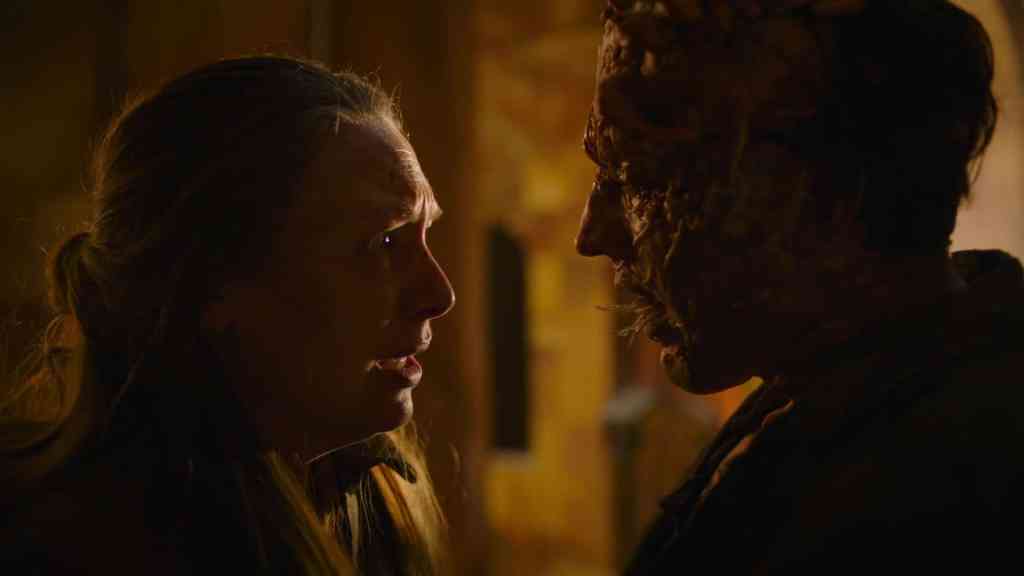
Druckmann mentioned they had captured two versions of this moment, one where the infected were clearly in focus and one where they weren’t, and that by ultimately treating this scene as an ‘intimate moment’ and shooting it in a more ‘beautiful’ way, it made for a creepier outcome.
The team also spoke to the nature of love within the the show, with Mazin saying that the scene underscored ‘the theme of love and the way love functions’, and that although the nature of their reproduction is ‘horrifying’, in that moment it was ‘tender’ and non violent.
Mazin also added that: ‘The fungus loves too, it makes more of itself, that’s what we do when we love each other. A lot of us make more of ourselves, that’s how the species is propagated’.
Additional analysis and notable quotes
- This is less of an analysis and more blind hope – It’s mentioned in this episode that Tess had a husband and a child who became infected, and though scenes delving into this weren’t able to fit within the confines of the series, I personally think there is potential for this to be explored in a comic book adaptation similar to The Last of Us: American Dreams.
- Troy Baker – ‘Whenever you leave an audience wondering what’s going to happen next, that’s exactly where you want to leave them’.
- Neil Druckmann – ‘[The cast and crew] all love this material so much, and they want to do right by it and they want to do right by me’.
- Craig Mazin – ‘You write a movie four times – when you write it, when you cast it, when you shoot it, and when you edit it’.
- Craig Mazin – (Referencing ‘the kiss’ with Tess and the infected) ‘There’s something so creepy and gross and primal about it, and yet also weirdly… beautiful’.
- Craig Mazin – ‘As we create new material that doesn’t exist in the game, for it to feel that it had always been there or that it integrates seamlessly, that’s the whole point’.
- Craig Mazin – ‘So much of who Joel is, is a man who wants to save his daughter, even though she’s been dead for twenty years… There’s this dark nature of his saviour hood’.
